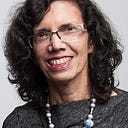Remembering Bea
Bea Laufgraben Sachs
January 7, 1919 — October 30, 2017
Today would have been my mother’s 100th birthday. She was planning to celebrate and she even had her outfit picked out, a long-sleeved leopard tunic with slim black pants, her signature Jackie Kennedy sunglasses, and bright coral Revlon “Fire and Ice” lipstick. Around her neck, three or four strands of chunky beads of her making and on her fingers two silver rings, so wide that she could not bend her knuckles.
It was definitely not a modest look. She was stylish, a bit on the flashy side, like a 1940s movie actress. When I close my eyes, I remember her in a red satin cocktail dress made by my Uncle Ralph, who was a pattern maker for a dress designer and who made my mother evening dresses on his lunch hour.
She was born in Brooklyn, NY, but moved to Providence, RI, when she was about 10 year old with her parents Sarah and Morris Schwartz. There, they went into business with the Hassenfelds, my great grandmother Lillian’s family, operating a mill that produced hat linings in Quidnick, Massachusetts.
Providence was the Promised Land to my mother. She lived on the East Side, excelled at school, and passed the entrance exam for Classical High School where she studied Latin, French and German. When she received her driver’s license at 16, she drove back and forth to Boston (with several cousins in tow) for piano lessons there.
The family clung together; renting bungalows near each other in Narragansett Bay. My mother was the oldest cousin, leading a troupe of girl cousins on beach adventures and often assigned to watch over her only sibling, Seymour, who was five years younger.
In an old photo, probably from 1935 when she was a college freshman at Pembroke, my mother sits with two friends on a stone wall: they are dressed in what looks like cashmere sweaters and tweed skirts, round their necks thick chokers of pearls. Every time she looked at the photo, Bea said the same words: “This was before things changed.”
I knew what she meant. Soon after, there was a harsh break with the Hassenfeld family and financial troubles followed. She transferred from Pembroke to a local state teacher’s college. Then, the family left Providence for Brooklyn, where she moved into a two-family attached brick home and enrolled in Brooklyn College. By 1939, she had married my father, Murray, whose family lived in an adjacent apartment. He was 10 years older than my mother and all I can remember of their young years as a couple is the two of them holding hands. He was tall and handsome with striking blue eyes. Bea adored him.
February, 1945. I am two years old; my sister Lily is five. Tragedy strikes. Uncle Seymour, Bea’s brother, age 20, a medic in the U.S. Army, steps on a landmine and is killed in the Battle of the Bulge. The family is in crisis and my grandparents move in with my parents. They live with us for the rest of my grandparents’ lives.
No one spoke of Seymour, at least not to me. There were framed photos of him, handsome in his army uniform, a small official box with his Purple Heart, but no words. In my mother’s top dresser drawer, she kept a birthday card with a purple orchid on the cover. Inside, in a small, neat hand, were the words: “Dear Sis, Happy Birthday, Love, Seymour.” Five years later, Bea gave birth to her third child, a son, and she named him Seymour.
Sometime in the 1950s, after relocating to Long Beach, NY, Bea returned to school for a Master’s in Special Education and she began teaching children with disabilities at East School. We lived then on Illinois Avenue in the West End, moving a few blocks away to a bayfront home on West Park Avenue.
Bea loved that home. She would sit by the big picture windows watching the oil tankers on Reynolds Channel. Perhaps her brother was on her mind because every time my dad went swimming, she called out the same words: “Be careful!” An omen, who knows? But, as it turned out, he just wasn’t careful or lucky enough. In 1963, he was killed when a drunk driver struck him as he was crossing the street in front of our house. At my first wedding, one year later, my mother was gaunt. The wedding photos show a woman in a yellow dress that hung on her shoulders. She did not smile for the photographer.
But, as was the case in her long life, Bea soldiered on, remarrying my stepfather Edward Sachs, and beginning a new career as a stone sculptor when she retired from teaching. I visited her once in her outdoor studio in Florida. She was wearing a mask and pounding with hand tools on a 100 pound piece of Alabaster marble. Bea chose her stones carefully, chiseling away to find what she called their “inner message.”
A champion Scrabble player (her goal seven-letter words), a master bridge player, a gifted artist, and a woman who attracted friends, she never seemed to be alone. After her second husband died, there were several handsome boyfriends, all of whom were more than happy to be her companion.
Larger than life. A woman who wrapped her body in vibrant shawls; a woman who in her nineties wore a little too much rouge. A woman who was absolutely beautiful.
As I was leaving after a visit to her water-view apartment in the Brookdale Senior Residence in Tribeca, Bea always reminded me: “Be careful crossing West Street; it’s very dangerous. Call me when you get home.”
I miss calling my mother, especially this morning when it would have been her 100th birthday.
